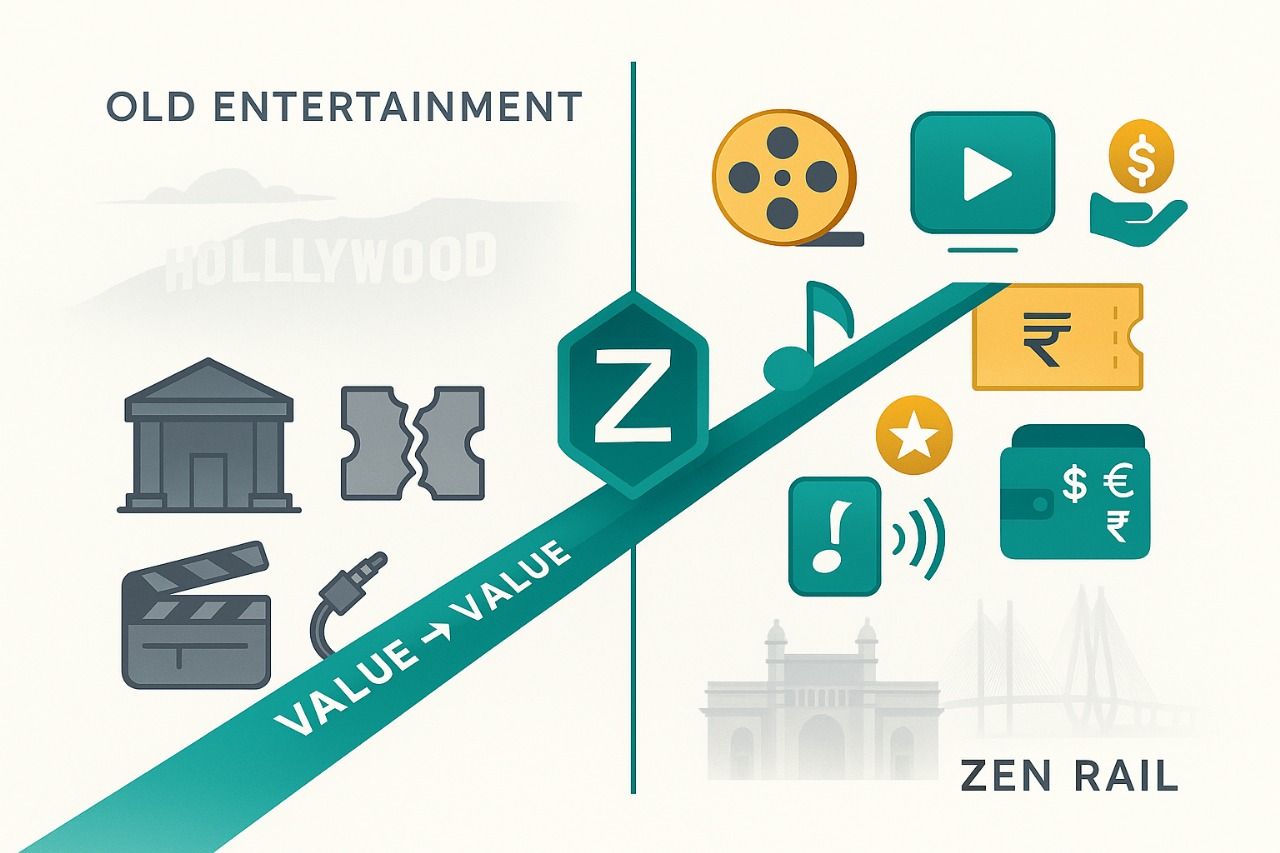
Every day, social media serves up a platter of possibilities for contemporary marketers thanks to the sheer scale of its captive audience. According to data from Statista, almost 4.9 million people use social platforms around the world and that number is projected to rise by another couple of million by the end of the decade.
It's common sense that marketing to end consumers in this vast and sprawling digital ecosystem would be a savvy idea, but what about harnessing the juggernaut power of social media to market to other businesses? Happily, if you want to level up your B2B marketing, platforms like Instagram, LinkedIn, Facebook, and Twitter are just as advantageous for you as they would be for your direct-to-consumer counterparts.
If you think about it, this welcome news is hardly surprising—because a whopping 93.79% of businesses are actively pursuing their own marketing efforts on the very same platforms. It stands to reason that if you want to get their attention, you can meet them right there on the playing field!
Yes, social media is a prime ally for achieving success as a B2B brand, but plenty of other businesses will be just as clued in on the opportunities to be seized. So, how can you get the upper hand? Let's get to grips with some stellar strategies to help your business stand out from the crowd.
What Makes B2B Social Media Marketing Strategies Different?
Long ago, in the earliest days of social media, platform creators dreamed of providing virtual spaces where friends and family would be able to connect and share, and advertisers would be able to frolic. However, next, something truly interesting happened. Businesses began claiming their own social media presences and personalities, connecting with customers more affordably, broadly, and meaningfully than ever before.
This was marketing magic in action—a place where audiences and brands could interact directly and slick campaigns could go viral, achieving massive reach without worrying about a cost per click.
It's no shock that today's brands spend a pretty decent chunk of their overall marketing budgets on social content creation and campaigns. It's also no revelation that in the current economic climate, businesses are managing their spending wisely. This year, roughly 58% of B2B marketers in the UK and US anticipated a marketing budget that is equal to or less than in 2022, but despite such stagnation, B2B brands are deciding to serve up a larger budgetary slice to their social media teams.
If social media is the place to be for B2B branding, what do you need to know about this particular sub-category of marketing? Crucially, it's important to recognise that the businesses you want the attention of are hustling just as hard as you are—and they'll respond to messaging that reflects that.
10 Essential Tips to Help Your B2B Brand Stand Out on Social Media
Digital channels such as social media are poised to become the setting for 80% of B2B sales interactions by 2025, so let's look a little further into how you can hone that hustle of yours with the needs of other businesses in mind.
#1: Make Your B2B Social Media Marketing Human
With the rise of chatbots, automation tools, and AI content generation, it's easy to get carried away with the gloss of artificiality. However, as useful as these tools may be, a human touch can be a powerful thing when it comes to forging more genuine B2B connections.
Research from LinkedIn highlights that 75% of B2B decision-makers turn to social media to size up whether a purchase is right for their enterprise. They'll be looking for shared values, transparency, brand authority, and outstanding communication. This makes a human presence—whether it's the voice that shines through your posts or the courteous comment replies—an impactful one indeed.
A great way to showcase the people behind your brand is to place leadership and employees in the spotlight from time to time. As an added bonus, this can double as employer branding, attracting new talent while giving your current team a greater sense of autonomy.
#2: Strategically Differentiate to Stand Out From the Competition
Your B2B brand is getting busy on social media, but as we mentioned, so are most other businesses—including your direct competition. These days, setting up your social profiles and posting once in a while isn't likely to cut the mustard. You need to discover an interesting edge that will allow your presence to shine the brightest.
When novel messaging and creative but consistent visuals are combined, the results can be potent. But to get these ingredients right, you need to understand your social media niche and curate in the right direction.
So start by asking who will engage in your content and why. What needs will your business address for theirs and how can you clearly communicate that value? From that point, you can begin to identify how to differentiate your B2B brand and product marketing from competitors' without veering off message.
#3: Position Your Social Media Pages as First Points of Contact
Chances are, you've put in some primo effort to get your website's SEO up to scratch. It represented a solid investment because organic web traffic is always a solid return. However, now the time has come to invest the same kind of might into transforming your social media pages into the kind of first-contact landing pages that you can truly be proud of.
Why is this important? Well, young consumers are increasingly using social media to track down what they need. 40% of Gen Z use Instagram or TikTok to look things up and even Google's execs aren't exactly happy about it.
Fortunately for your B2B brand, this is something that you can leverage to your advantage. The place to start is sprinkling smart keywords through your profiles and posts, before getting to grips with how to hashtag #likeapro. It's also worth regularly running your own industry-relevant social media searches to figure out how to boost your visibility even higher.
#4: Build Your Community to Boost B2B Brand Authority
A little earlier, we touched on the importance of the human element on social media as well as the power of communication. These are concepts that you can really pick up and run with by focusing on forging community, stimulating stronger audience relationships and customer loyalty along the way. In fact, according to HubSpot, 90% of social media marketers say building an active online community is critical to success in 2023. Here are some B2B community-building options to explore:
• Get active in social media groups that are relevant to your B2B niche
• Create your own groups and establish yourself as an industry thought leader
• Drop high-value content and free resources to make your business indispensable
• Jump into authority-focused digital spaces like Reddit and Quora
• Keep comments-based dialog flowing with your day-to-day audience
#5: Use Multimedia to Keep Your Social Feeds Fresh
Social media continues to evolve at flat-out speed and it's essential for B2B brands to keep up. When Instagram first debuted the Reels feature in 2019, nobody could have predicted how quickly short-form video would come to claim space on the platform. Today, users increasingly get to choose how they use their go-to social media platforms, including whether they pay more attention to images, linked posts, polls, memes, video content, or SnapChat-style stories.
Right now, according to Sprout Social, short-form video is the most engaging type of in-feed social content—but that may change tomorrow. Clearly, there is an advantage to be claimed by mastering every format on your social media channels of choice. Crucially, a diverse multimedia offering will keep things fresh for your audience while ensuring that you don't drop out of view for the business decision-makers that you want to reach the most.
#6: Balance Brand and Demand Marketing
Undoubtedly, the right brand-building social media strategy will elevate both awareness and perception of your business among the minds that matter. However, there is another angle of marketing that should always be present in the mix and that is demand marketing.
What do we mean by demand marketing? Well, vitally this carries us back to the idea of understanding the needs of your customers. As a business, you cannot create demand—you can only step up to meet it.
Where brand marketing focuses on forging epic associations that wire and fire, demand marketing focuses on demonstrating an understanding of customer needs and an ability to provide optimal solutions. The B2B gurus at LinkedIn recommend that brands divide their marketing efforts pretty evenly between these two endeavors.
#7: Monitor Your Market Niche to Stay One Step Ahead
I've ticked off talking about the importance of differentiating your B2B brand from its competitors, but there is more to be uncovered in keeping tabs on others operating within your social media market niche. Because their target audience is yours and vice-versa, there is much to learn through simple observation.
Soon, you'll be able to spot which of the opposition's campaigns, content strategies, or even comments get the most engagement and which fall flat. Not to mention, you'll also be able to sniff out sneaky opportunities. For example, if there's a buzz in the headlines about something relevant to your industry, you'll definitely want to jump on it—but if your competition drops the ball in this area then you'll likely be able to nab some of their limelight by taking the lead on a trend.
#8. Leverage Audience Insights to Your Advantage
Having initially done the work to understand your audience well enough to reach them, now you can make the most of social media analytics and dig even deeper. As the world's ultimate data gatekeepers, social media platforms thankfully have the sense to provide a bevy of information to businesses about how users interact with their content.
Not only can this information allow you to confirm that things are working well, but you can also use audience insights to test different approaches to your B2B brand marketing. You'll need to identify the metrics that are going to be most useful and consolidate them between platforms, but from there you can analyze, discover, apply, and repeat.
Yes, with analytics at your fingertips, you can zero in on the kinds of content to prioritize, where and when to post, and even which platforms are more worthy of your time. Thinking back to those limited B2B marketing budgets, there is no shame but in fact great wisdom in dialing in your social marketing strategy tightly so that time and money invested always provides the best possible return.
#9. Set Clear KPIs Based on Your Core Objectives
Speaking of metrics, have you already made friends with a handy set of key performance indicators? If not, it's time to find your new best buddies and get acquainted. These crucial data points are going to elucidate whether or not your B2B brand marketing strategy is a sure thing.
Key performance indicators, or KPIs for short, are the measurables that any business can examine to better understand their progress. The best way to identify the right social KPIs for your brand is to think first about what you hope to achieve on these platforms and work out from there. Your goals might include things like:
• Increase brand awareness • Drive website traffic • Build trust and authority • Generate leads • Drive conversions • Inform customers • Boost customer retention • Attract job applicants
Once you know the whys behind your social media marketing efforts, you can much more easily pinpoint the right metrics to track. For example, social likes and shares are healthy indicators of growing brand trust and authority, while tracking your audience from your latest social posts through to conversion will let you illuminate what it was that sealed the deal.
#10. Regularly Re-focus Your Targeting
For most B2B brands on social media, marketing dispatches will be made up of a mix of organic and paid content. When it comes to your paid campaigns, social media platforms are increasingly facilitating laser-sharp ad targeting, allowing you to point and pull the trigger with curated content for the exact kind of businesses you want to speak to.
But you can also think of your organic content as targeted content. By factoring in things like the types of professionals you hope to reach, when and how they use social media, and what will make them sit up and pay attention the most, you can make sure your messaging always land. Dividing your audience into segments, catering to each segment in turn, and consistently monitoring to see if a tactical shift is necessary will help you hold your relevance overall.
At the end of the day, as specific as B2B brand marketing may be in some regards, one thing is certainly universal. Being a champion within the varied worlds of social media means providing something that people truly want to scroll to—something that gives them that all-important dopamine hit while ideally anchoring them to your business for the long haul. If you make that a central tenant to your hustle while harnessing the above tips, you should soon find yourself climbing the social media podium towards success!




